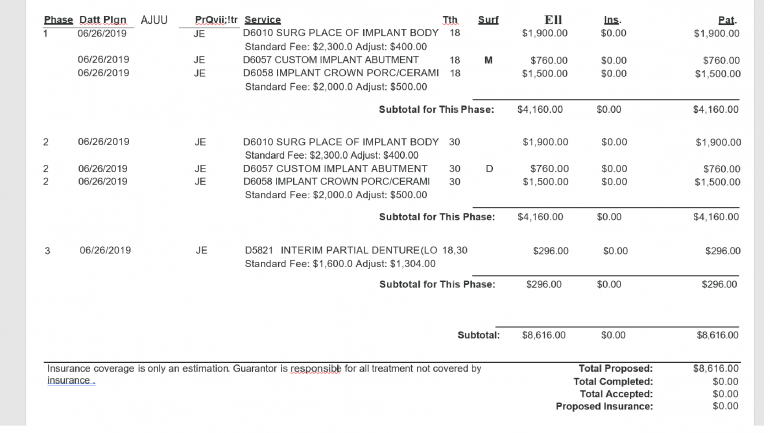
8703: Dental Code D8703: Replacement of Lost or Broken Retainer
Dental Code D8703 refers to the replacement of a lost or broken retainer for the maxillary (upper) teeth. This code is specific to the procedure involved in replacing a retainer and aims to provide patients with a clear understanding of what to expect during the process.
What does Dental Code D8703 mean?
Dental Code D8703 signifies the replacement of a retainer for the upper teeth. A retainer is a custom-made dental appliance that is used following orthodontic treatment, such as braces, to maintain the position of the teeth. Over time, retainers can become lost or broken, necessitating their replacement. The purpose of this code is to outline the specific procedure involved in replacing a maxillary retainer.
Assessment and Examination
Before proceeding with the replacement of a lost or broken retainer, your dentist will conduct a thorough assessment of your dental condition. This may involve a visual examination, taking X-rays, and discussing your medical history. The visual examination allows the dentist to evaluate the overall health of your teeth and gums, and identify any visible issues such as tooth decay or gum disease. X-rays, on the other hand, provide a more detailed view of your dental structures, allowing the dentist to assess the condition of your roots, jawbone, and surrounding tissues. By discussing your medical history, the dentist can gather information about any underlying health conditions or medications that may impact the retainer replacement process. This comprehensive assessment helps the dentist determine the need for retainer replacement and ensures that any underlying dental issues are addressed before proceeding with the procedure.
Impressions or Digital Scans
Once the need for retainer replacement has been established, the dentist will take impressions or digital scans of your teeth. This step involves creating an accurate mold or digital representation of your upper teeth, which serves as a blueprint for the fabrication of the new retainer. The dentist will use a dental putty or a digital scanner to capture the precise shape and alignment of your teeth. These impressions or scans are then sent to a dental laboratory where skilled technicians will use them to create a customized retainer. The accuracy of the impressions or digital scans is crucial as it ensures that the replacement retainer will fit your teeth perfectly, providing optimal functionality and comfort.
Retainer Fabrication
Based on the impressions or digital scans, a dental laboratory will fabricate the replacement retainer. Skilled technicians with expertise in dental prosthetics will use the provided mold or digital data to craft a retainer that matches the contours of your maxillary teeth. They will carefully design and shape the retainer to ensure a precise fit and proper alignment with your teeth. The retainer will be constructed using durable and biocompatible materials such as acrylic or a combination of metal and acrylic, depending on your specific needs and preferences. These materials are safe for oral use and are designed to withstand the forces exerted during everyday activities like eating and speaking. The fabrication process may take a few days, as the technicians meticulously work to create a retainer that is both functional and aesthetically pleasing.
Retainer Fitting
Once the replacement retainer is ready, you will visit your dentist for a fitting appointment. During this step, the dentist will carefully place the retainer on your upper teeth, ensuring a snug and comfortable fit. They will check the retainer's position and make any necessary adjustments to ensure that it fits properly and does not cause any discomfort or interference with your bite. The dentist may ask you to close your mouth and perform various movements to ensure that the retainer remains securely in place and does not impede your natural bite or speech. If any adjustments are required, the dentist will make them on the spot to ensure that the retainer provides optimal effectiveness and comfort.
Oral Care Instructions
To maintain the retainer's effectiveness and prolong its lifespan, your dentist will provide you with detailed oral care instructions. These instructions may include how to clean the retainer, when to wear it, and any dietary restrictions to follow. Cleaning the retainer regularly with a mild soap or a specific retainer cleaning solution will help keep it free from bacteria and plaque buildup. Your dentist may also recommend soaking the retainer in a denture cleaner or using a soft-bristle toothbrush to gently brush away any debris. Additionally, wearing the retainer as instructed by your dentist, usually during sleep or for a specified number of hours per day, is essential to maintain the alignment of your teeth. It's important to follow any dietary restrictions mentioned by your dentist, such as avoiding sticky or hard foods that could damage the retainer. By adhering to these oral care instructions, you can ensure the longevity of the retainer and the stability of your orthodontic treatment outcomes.
Summary of Dental Code D8703
Dental Code D8703 involves the replacement of a lost or broken maxillary retainer. This procedure consists of several steps, including the initial assessment and examination, impressions or digital scans, retainer fabrication, retainer fitting, and oral care instructions. By following these steps, patients can ensure the proper replacement of their retainer and maintain the alignment of their upper teeth. If you experience any issues with your retainer, consult with your dentist to determine if a replacement is necessary and to receive appropriate care.
Dr. BestPrice - Where affordability meets excellence! Join us in revolutionizing the way you think about dental care.
